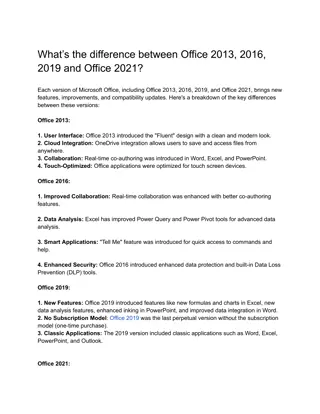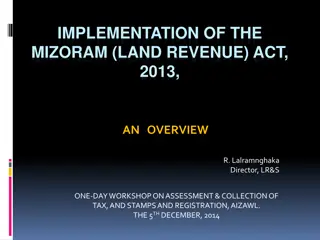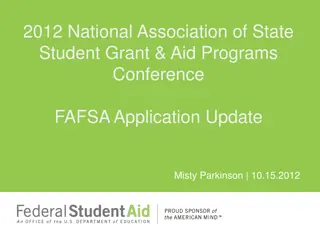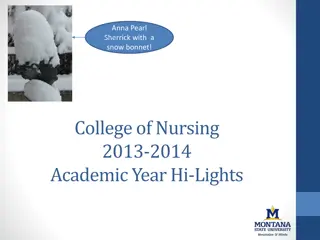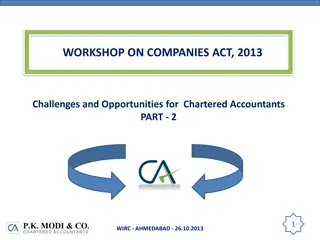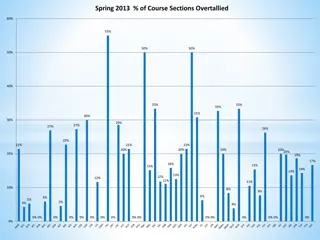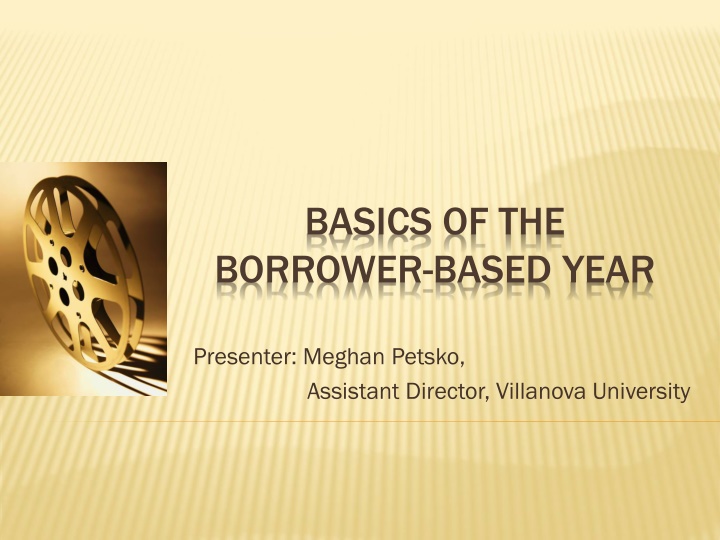
Borrower-Based Academic Year in Student Loans
Learn about the Borrower-Based Academic Year (BBAY) system in student loans, including its major differences from the Scheduled Academic Year (SAY), the two types of BBAY, eligibility criteria, loan limits, and how it impacts annual loan limits for students. Discover the nuances of BBAY 1 and BBAY 2 and how they are implemented in educational institutions.
Download Presentation

Please find below an Image/Link to download the presentation.
The content on the website is provided AS IS for your information and personal use only. It may not be sold, licensed, or shared on other websites without obtaining consent from the author. If you encounter any issues during the download, it is possible that the publisher has removed the file from their server.
You are allowed to download the files provided on this website for personal or commercial use, subject to the condition that they are used lawfully. All files are the property of their respective owners.
The content on the website is provided AS IS for your information and personal use only. It may not be sold, licensed, or shared on other websites without obtaining consent from the author.
E N D
Presentation Transcript
BASICS OF THE BORROWER-BASED YEAR Presenter: Meghan Petsko, Assistant Director, Villanova University
WHERE TO BEGIN Two Types of Academic Years to monitor Annual Loan Limits: SAY: Scheduled Academic Year BBAY: Borrower-Based Academic Year
SCHEDULED ACADEMIC YEAR (SAY) Follows the college/university academic calendar Fixed Period of Time that begins and ends at the same time each year May have summer as header or trailer Source: FSA Handbook, Volume 3 Chapter 5
BORROWER-BASED ACADEMIC YEAR (BBAY) Major difference: BBAY does not have fixed beginning and end dates. Three types of BBAY Floats with an individual student or a group of students in a program of study Usually explain it as following the student. Source: FSA Handbook, Volume 3 Chapter 5
BBAY 1 For credit-hour programs using SAY with standard or non-standard SE9W terms Can be used by schools with traditional academic calendars May be used for all students, certain students, or certain programs May alternate BBAY1 with SAY as long as there is no overlap Source: FSA Handbook, Volume 3 Chapter 5
BBAY 1 Students must be enrolled in first term of the BBAY 1 (even if less than time) Length of BBAY1 must equal the number of terms in the program s SAY, excluding the summer trailer/header Number of hours/weeks in BBAY1 do not need to meet the regulatory requirements for an academic year if BBAY1 includes summer term Total of all loans received within BBAY1 may not exceed annual loan limit Students become eligible for new annual loan limit once BBAY1 calendar has elapsed Source: FSA Handbook, Volume 3 Chapter 5
BBAY 2 MUST be used by programs not offered in a SAY/traditional academic year that have: Standard Terms OR Non-Standard Terms substantially equal and at least 9 weeks in length Must include same number of terms and weeks in the program s academic year definition Total of all loans received within BBAY2 may not exceed annual loan limit Students become eligible for new annual loan limit once BBAY2 calendar has elapsed Source: FSA Handbook, Volume 3 Chapter 5
BBAY 1 AND BBAY 2 After original loans, student may receive additional loans during same BBAY if: Student did not receive maximum annual loan amount and has eligibility Student progresses to grade level with higher loan limit Student changes from dependent to independent Source: FSA Handbook, Volume 3 Chapter 5
BBAY 1 AND BBAY 2 Mini-sessions (summer or otherwise) must be combined with each other or with other terms and treated as a single standard term Students do not have to be enrolled in each mini-sessions, but must have been able to enroll at least time in the combined term Source: FSA Handbook, Volume 3 Chapter 5
BBAY 3 MUST be used by programs that offer: Clock-Hours Non-term credit hours Non-Standard terms that are not substantially equal and at least 9 weeks in length Begins with time enrollment Source: FSA Handbook, Volume 3 Chapter 5
BBAY 3 Must include at least the number of hours and weeks in academic year definition Can t exceed annual loan limit Regains eligibility for new annual loan limit only after successfully completing the hours AND weeks of instructional time in BBAY3 Source: FSA Handbook, Volume 3 Chapter 5
EXAMPLE BBAY 1 BBAY where SAY contains 2 semesters Year 1: Fall/Spring (SAY or BBAY) Year 2: Summer/Fall (BBAY) Year 3: Spring/Summer (BBAY) A student doesn t have to attend all of the terms in a BBAY, but the BBAY cannot begin with a term that the student doesn t attend. Source: FSA Handbook, Volume 3 Chapter 5
ALTERNATING SAY/BBAY 1 Students can receive another loan sooner than would be allowed under SAY Standard Need to document if using this procedure into office policies Need to understand repercussions (getting to aggregate limit sooner) Source: FSA Handbook, Volume 3 Chapter 5
EXAMPLE BBAY 2 Standard and non-standard SE9W programs without a SAY, must use BBAY 2 Year 1: Semester #1, Semester #2 Year 2: Semester #3, Semester #4 (not enrolled) Year 3: Semester #5, Semester #6 BBAY must include enough terms to meet the minimum FSA academic year requirements for weeks of instructional time, no exception like in BBAY 1. Source: FSA Handbook, Volume 3 Chapter 5
EXAMPLE BBAY 3 BBAY begins when student is enrolled and does not end until the later of the date the student successfully completes the credit hours in the year or the number of weeks of instructional time in the year. Year 1: Clock Hours 1 to 900 (30 weeks) Year 2: Clock Hours 901 to 1800 (30 weeks) OR OR Year 1: Credit Hours 1 to 36 (30 weeks) Year 2: Credit Hours 37-72 (30 weeks) Source: FSA Handbook, Volume 3 Chapter 5
BBAY 3 PROGRESSION Student s enrollment status may affect how soon student regains eligibility for new annual loan limit, since student must complete minimum number of hours or weeks of instructional time in the year Students who attend part-time will take longer to complete a BBAY than a full-time student Students in SAY or BBAY1/2 ends when the calendar period associated with the terms has elapsed, regardless of how many credit-hours or weeks of instruction the student completed. Source: FSA Handbook, Volume 3 Chapter 5
VILLANOVA UNIVERSITY BANNER User Academic year is Fall/Spring with Summer as a header Uses BBAY for graduate programs and part- time undergraduate programs. Not open to our traditional full-time undergrads Low Cohort Default Rate-no split disbursements or first-time borrower delay
VILLANOVA UNIVERSITY Programs that Frequently Use BBAY Executive MBA Program Master s of Accountancy Master s of Finance MSN in Nurse Anesthesia Accelerated 2nd Degree Nursing Program Do NOT use it for our online modular programs, keep to SAY for those programs
VILLANOVA UNIVERSITY Programs that Frequently Use BBAY Executive MBA Program Master s of Accountancy Master s of Finance MSN in Nurse Anesthesia Accelerated 2nd Degree Nursing Program Do NOT use it for our online modular programs, keep to SAY for those programs
VILLANOVA UNIVERSITY BSN-Express Begins in the Summer Year 1: Summer/Fall Year 2: Spring/Summer Students can either receive the full loan limit in Spring, or can request to split the loan between spring and summer. Executive MBA Begins in the Fall Year 1: Fall/Spring Year 2: Summer/Fall Year 3: Spring/Summer* *Students graduate at the end of spring, so they can receive full loan limit in spring as costs for the program are high
VILLANOVA UNIVERSITY Positive Aspects Access to less costly loans Follows the student and the student s curriculum Reassurance to student that consistent funding available Negative Aspects Completely Manual, Time- consuming Potential of creating larger loan debt UG students could reach Aggregate limit sooner Concerned it can make borrowing too easy
Thank you for attending! Meghan Petsko: meghan.petsko@villanova.edu

